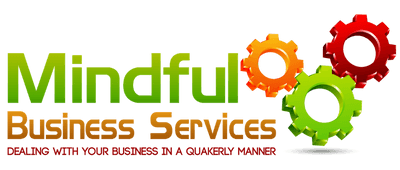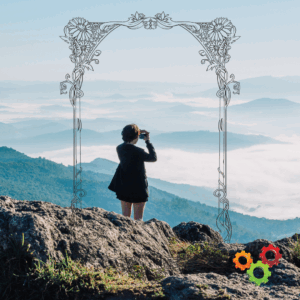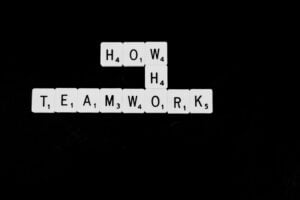A Good Yarn
Firstly, in the last couple of A-Z blogs I’ve talked about reviewing your organisation and how you communicate with each other and further afield.
Following this, I will refocus this time and talk about oral or verbal history and how that can enhance the meeting.
In the last few years, I’ve been part of meetings where we’ve suddenly lost a long-standing member and realised exactly how much they were relied on!
…sound familiar?

The original meaning of the word Elder.
Generally, not only because they remember your parents or grandparents, or that you were once a Young Friend rather than the parents of Young Friends…
But because they remember…
- what was decided about the gate at the top of the garden
- where the original plan and deeds for the burial grounds might have been filed.
- who the benches in the meeting room were donated by, and the name of the Quaker who created them
- the name of the artist that painted and donated the artwork in the lobby, can it be sold or given away?
- why the warden’s accommodation was set up the way it was
- that you have additional bank accounts that someone is looking after for you – until you ask about them or they die
- or any other long and complicated situations that you might need to untangle and sort out before it can be wound up
All of the above are things I’ve seen our clients have to deal with, some were more easily sorted out, and other problems we’ve just had to accept won’t be sorted. That information or documentation was lost ‘in the mists of time’.
There is nothing predictable as time passes and change occurs after all.
“In the end, we'll all become stories. Or else we'll become entities. Maybe it's the same.”
Margaret Attwood, Moral Disorder and Other Stories Tweet


Letting out the yarn and our lives speak
Creating an Oral History project can be a way to capture some of this knowledge. In my view, it will help you find photos, objects and even some of the paperwork at the same time.
There are different ways of organising such a project. In one meeting, they asked the teenagers to help, and the cassette player offered was replaced by videos and edited audio files. The project went on to feature in exam coursework for at least one participant.
There are guides available on what sort of themes you might want to include, tweak-able to your own building(s), or specific topics that make sense for you and your organisation.
- Boston Public Library: Planning an Oral History Project
- Oral History Society: Getting Started
- Quakers Aotearoa New Zealand Quaker Oral Histories
- Guildford College Archives: Oral Histories
Don’t limit this to those of a certain age.
At Muswell Hill LM we created videos of members of Children’s Meeting talking about our building and routines to present to Area Meeting for the annual ‘life of the meeting’ one year and they were great fun to revisit when rediscovered years later.
- Of course you might also be inspired to use a video as outreach or as part of an exhibition,
- or to use the interviews to write a book.
- Videos can go much further than you expect, especially if you make them publicly available on YouTube, but can be protected as unlisted links for internal use too.
“The stories we tell literally make the world. If you want to change the world, you need to change your story. This truth applies both to individuals and institutions.”
Michael Margolis CEO, Storied, Inc
Finally, don’t get tangled in the yarn or let the yarn run out. In my experience, there are several ways to build corporate memory. I think it is fun to think about who across the organisation can get involved and what alternative mediums you can use.

Wendrie Heywood
MBS Founder
Share your ideas & pain points
In 2025, we’re excited to dive into the "three C’s"—Communication, Community, and Collaboration—with a series of quarterly training workshops and bi-weekly insightful blog posts on these essential themes.
To make this series even more valuable, we invite you to share your ideas for specific topics you’d like us to cover. Your input will help us tailor each workshop to meet your needs and make a lasting impact!
SHARE HERE







